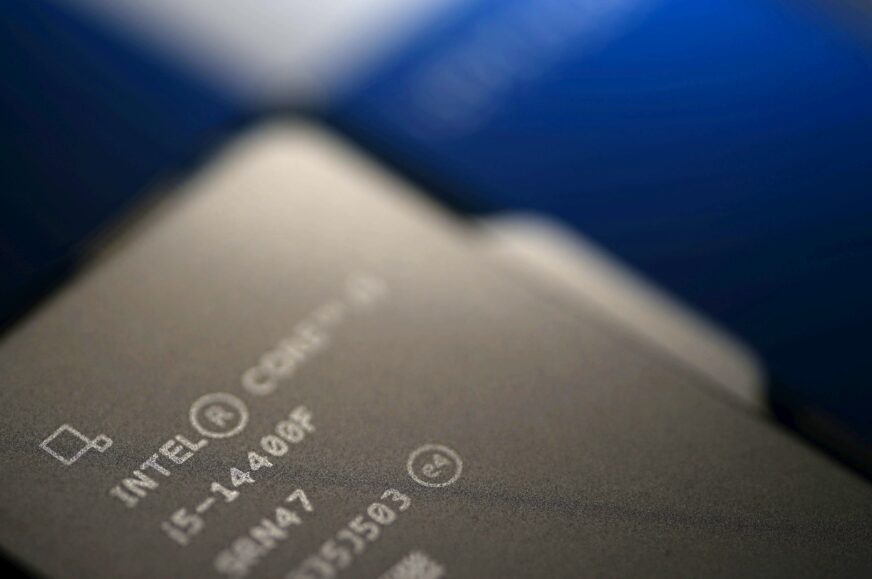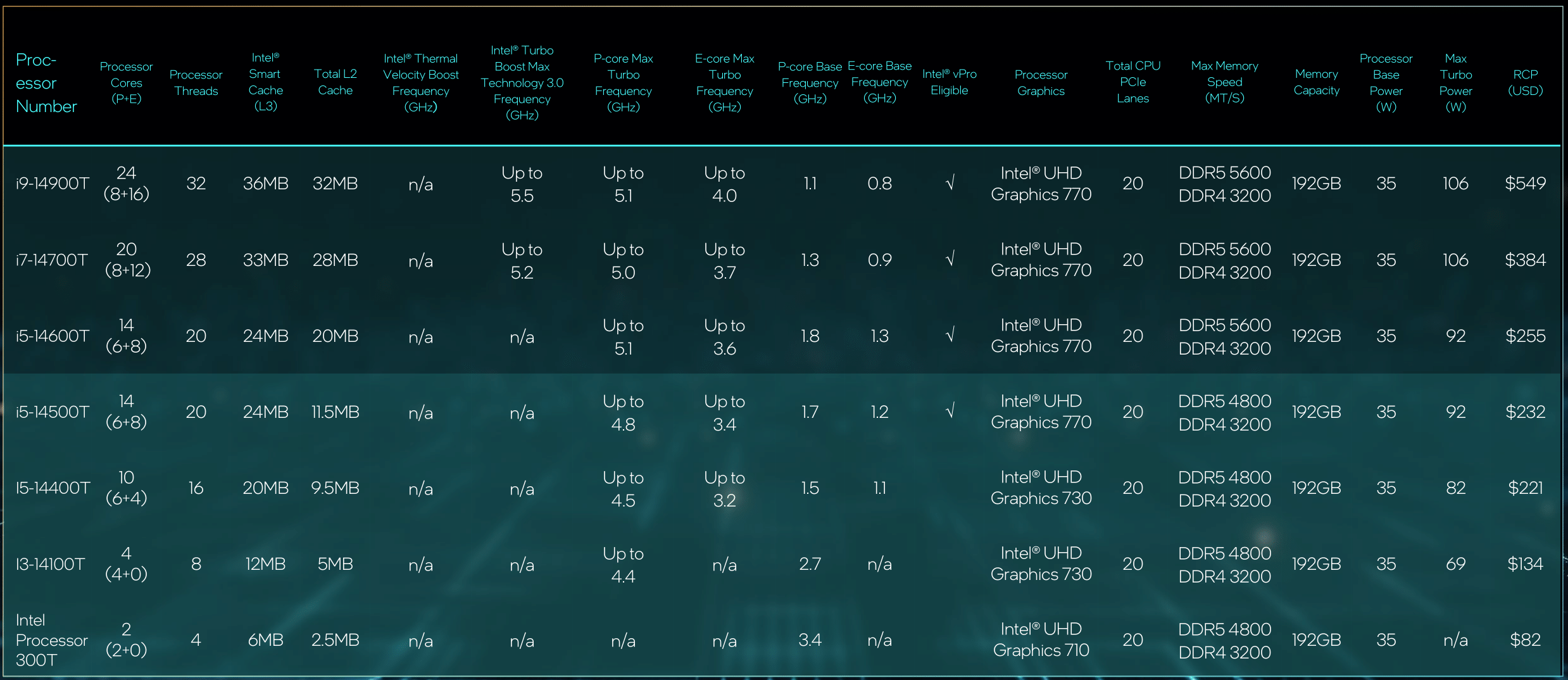65W and 35W 14th-gen Core processors for desktop launched: Models and Parameters
Hardly a surprise as news of these CPUs was leaked long ago, but Intel has now launched the main part of its new generation of desktop processors during CES 2024 – the 14th-gen Core CPUs with 65W and 35W (nominal) TDP, i.e. regular models with a locked multiplier. Until now, only the 125W K models for enthusiasts have been on the market, but there’s finally more affordable models out, as well as the low-power T-labeled options.
Both the 65W and 35W models should be available for purchase now (although of course some retailers may take a little longer to get stock or list the SKUs). This generation is a so-called refresh, which means it uses the same chips as the previous generation, but with slightly higher clock speeds. Thus, neither the performance per 1 MHz (“IPC”) nor the features or supported I/O connectivity or capabilities of the integrated graphics have changed. It also remains the case that these processors have locked multipliers and cannot be overclocked.
Some of the processors use Raptor Lake silicon (stepping B-0) with 8+16 cores. These have the advantage that the P-Cores have a larger 2MB L2 cache (E-Cores have 4MB of L2 cache shared by four of them), and these processors officially support DDR5-5600 memory (in addition to DDR4-3200). However, some models are based on C-0 and H-0 chips from the Alder Lake generation, which differ by having a smaller, 1.25MB L2 cache in the big cores (and only 2MB L2 cache in E-Core clusters). You can recognize these processors by the fact that they only officially list support for DDR5-4800 (besides DDR4-3200).
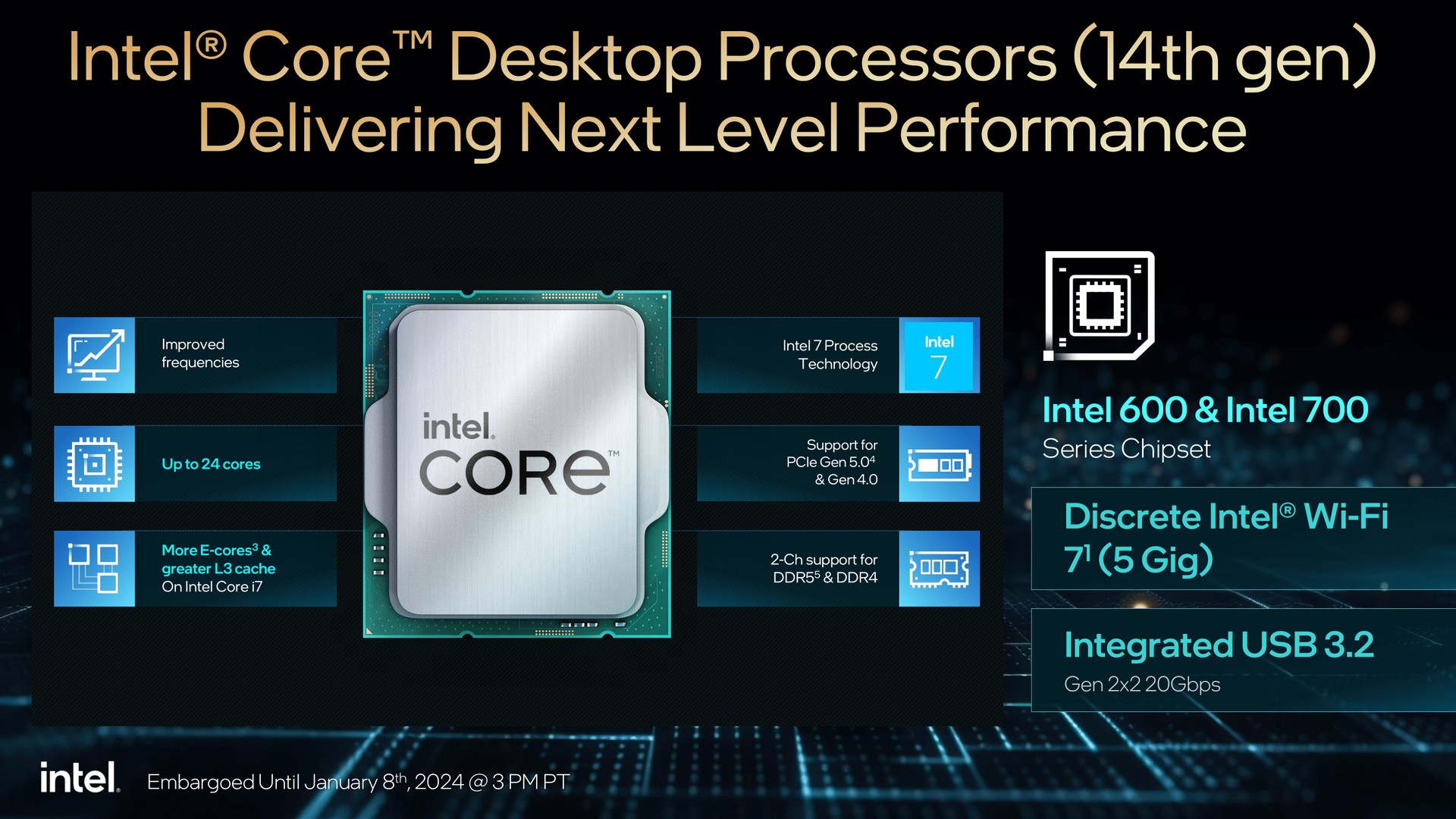
200 MHz more on big cores, 100 MHz on little ones
Within the mainstream 65W series, the most powerful model is the Core i9-14900 with 8 P-Cores and 16 efficient E-Cores, 32 threads in total and 36 MB of L3 cache. Its clock speed for single-threaded applications is a very high 5.8 GHz. The structure of the boost is such that 5.4 GHz is achievable on all cores (Turbo 2.0), 5.6 GHz on preferred cores (Turbo Boost Max 3.0) and then there is Thermal Velocity Boost, which should depend on temperature staying below 70°C (but boards often seem to ignore this requirement) and which pushes the clock speed up to the maximum 5.8 GHz. The maximum E-Core clock speed in the boost is 4.3 GHz, and the base clock speeds are 2.0 GHz (P-Cores) and 1.5 GHz (E-Cores).
Comparing with the previous generation (i9-13900), in short, the Core i9-14900 has the same base clock speeds, but the maximum clock speeds have increased by 100 MHz for the E-Cores and by 200 MHz for the P-Cores. Both the TDP (65 W) and the so-called maximum turbo power (219 W), which indicates how much the processor can really draw under load, are unchanged. And Intel also kept the same unchanged price of 549 USD. In practice, though, the i9-14900 may cost more than the i9-13900 as that predecessor has already slipped into discount territory in stores.
A significantly more interesting change has happened with the Core i7-14700, as this model gets more cores. Instead of 8+8, it now has a configuration of 8 P-Cores and 12 E-Cores, for a total of 28 threads and 33 MB of L3 cache (versus 30 MB in last year’s model). Its multi-threaded performance has therefore moved closer to the Core i9 model. Its clock speeds are 2.1–5.4 GHz for P-Cores (on the preferred cores with Turbo Boost Max 3.0, outside of which the maximum is 5.3 GHz) and 1.5–4.2 GHz for E-Cores. That means that P-Core clock speeds have gone up by 200 MHz and E-Core clock speeds by 100 MHz (plus there are 12 of those E-Cores instead of 8) as well. Meanwhile, the maximum turbo power hasn’t changed, it’s still 219 W, and Intel has kept the price at 384 USD as well.
The Core i5-14600 has also received an upgrade, but one that is less noticeable at first glance. It still has six P-Cores and 8 E-Cores (20 threads, 24 MB of L3 cache). But while the previous generation was using C-0 (Alder Lake) silicon with smaller L2 cache and official support for DDR5-4800 only (unofficially, faster speeds work via XMP, of course), the Core i5-14600 instead uses B-0 silicon with Raptor Lake architecture, giving it DDR5-5600 support and the larger L2 caches. The clock speeds are 2.7–5.2 GHz for P-Cores and 2.0–3.9 GHz for E-Cores. Here it’s a +200 MHz speedbump for both. Maximum turbo power also remains unchanged compared to the i5-13600, 154 W. Even the price is unchanged at 255 USD.
Intel will offer two additional i5 models. The Core i5-14500 also has a maximum turbo power of 154W, 6+8 cores and 20 threads, and 24MB of L3 cache. But it differs b sticking with the older Alder Lake silicon with smaller L2 caches. However, the clock speeds are high, 2.6–5.0 GHz for P-Cores and 1.9–3.7 GHz for E-Cores. It’s again an increase of 200 MHz for both core types. The clock speeds of the i5-14500 are actually the same as the i5-13600. The price remains the same as what the i5-13500 started at, 232 USD.
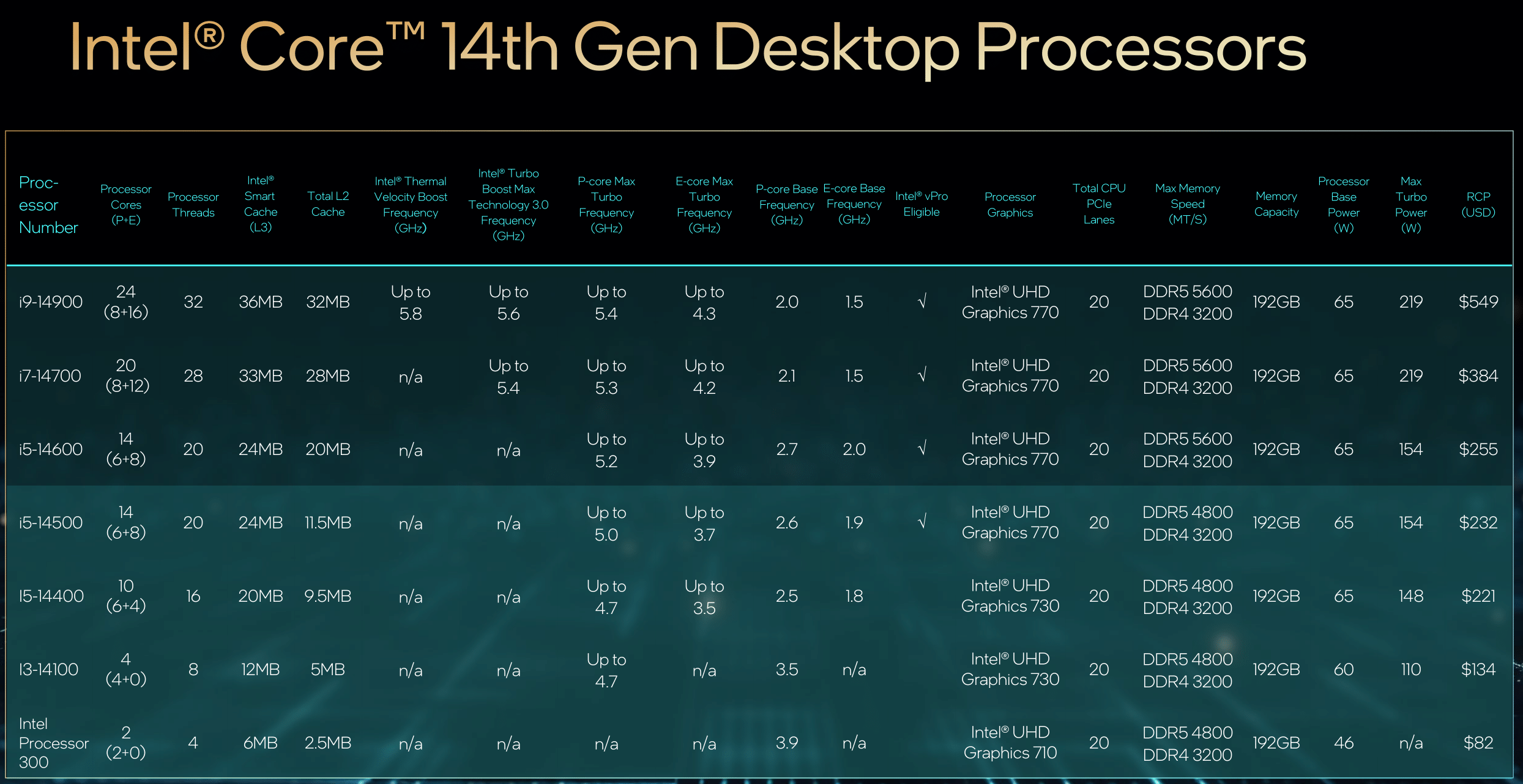
Below this model is the Core i5-14400, which is a model with 6 P-Cores and only 4 E-Cores (16 threads total, 16 MB of L3 cache) and clock speeds of 2.5–4.7 GHz for P-Cores and 1.8–3.5 GHz for E-Cores. The speedbumps are reversed here – E-Cores were sped up by 200 MHz, but P-Cores only by 100 MHz. This model already has a lower maximum turbo power of 148 W, which is also unchanged from the previous generation. The price hasn’t moved either (221 USD). There is one more limitation compared to the more expensive i5-14500. The i5-14400 has a cut-down GPU with fewer units – just the UHD 730 instead of the UHD 770. This means only 24 EUs (192 shaders) instead of 32 EUs (256 shaders).
The Core i5-14400 is also based on older Alder Lake/C-0 silicon. However, there should also be a version with the B-0 silicon from Raptor Lake, HWCooling.net plans to again try to test the differences between the two versions. But even the Raptor Lake-based version of the Core i5-14400 will have the larger L2 cache turned off, from Intel’s perspective, the only reason to use this larger die is to salvage partially defective chips. But as past generations have shown, the die variance may cause differences in operational characteristics, for example.
Tip: Not every Core i5-13400F is the same: Raptor (B0) vs. Alder (C0) lake
Getting into the low end, which is populated by SKUs that aren’t hybrid any more and use just P-Cores (the H-0 generation Alder Lake die should be used). Sadly, that didn’t make Intel to enable AVX-512 for them. Core i3-14100 is a quadcore with eight threads and a 12MB L3 cache, clocked at 3,5–4,7 GHz (+200 MHz again), also at unchanged 134 $ price. Maximum turbo power has done up from 89 W to 110 W, however. The processor is another one with the cut-down UHD 730 iGPU with 24 EU.
The very cheapest model you can buy in the regular 65W range is the 82$ Intel 300 (or Intel Processor 300, this naming is the result of the discontinuation of the Celeron and Pentium brands). It has two cores with four threads and 6 MB of L3 cache, a clock speed of 3.9 GHz (no boost at all) and the Intel UHD 710 graphics (further cut-down configuration with just 16 EUs / 128 shaders). Its TDP is 46 W and it doesn’t have an increased maximum turbo power, as it doesn’t even have turbo.
F models: no GPU, but cheaper for gaming PCs
In addition to these base models, however, you can also buy 65W (nominally at least) models with the F suffix. As in previous generations, this means that the integrated GPU is disabled, but the other parameters are the same as in the standard version. The trade-off gives you a lower price (typically slashed by 25 USD), making these processors a convenient choice for a gaming PC where you’ll have a dedicated GPU. There are the Core i9-14900F (524 USD), Core i7-14700F (359 USD) options, Core i5-14400F (196 USD) which will probably exist in the B-0 and C-0 versions just like i5-14400 and finally the Core i3-14100F (109 USD). For how these SKUs compare to the previous generation, see what was just said about standard models.

As previously mentioned, the prices of the CPUs seem to be unchanged from the previous generation across the lineup, so in the long run the price/performance ratio will be somewhat improved. In the short term, however, this may not be entirely true. Where 13th generation Core processors already got discounted, their price is now below MSRP, but the new 14th generation models will start at the suggested price (MSRP) level. Therefore, it may still be advantageous to buy 200 MHz slower 13th generation models now if you can save a significant amount of money by doing that.
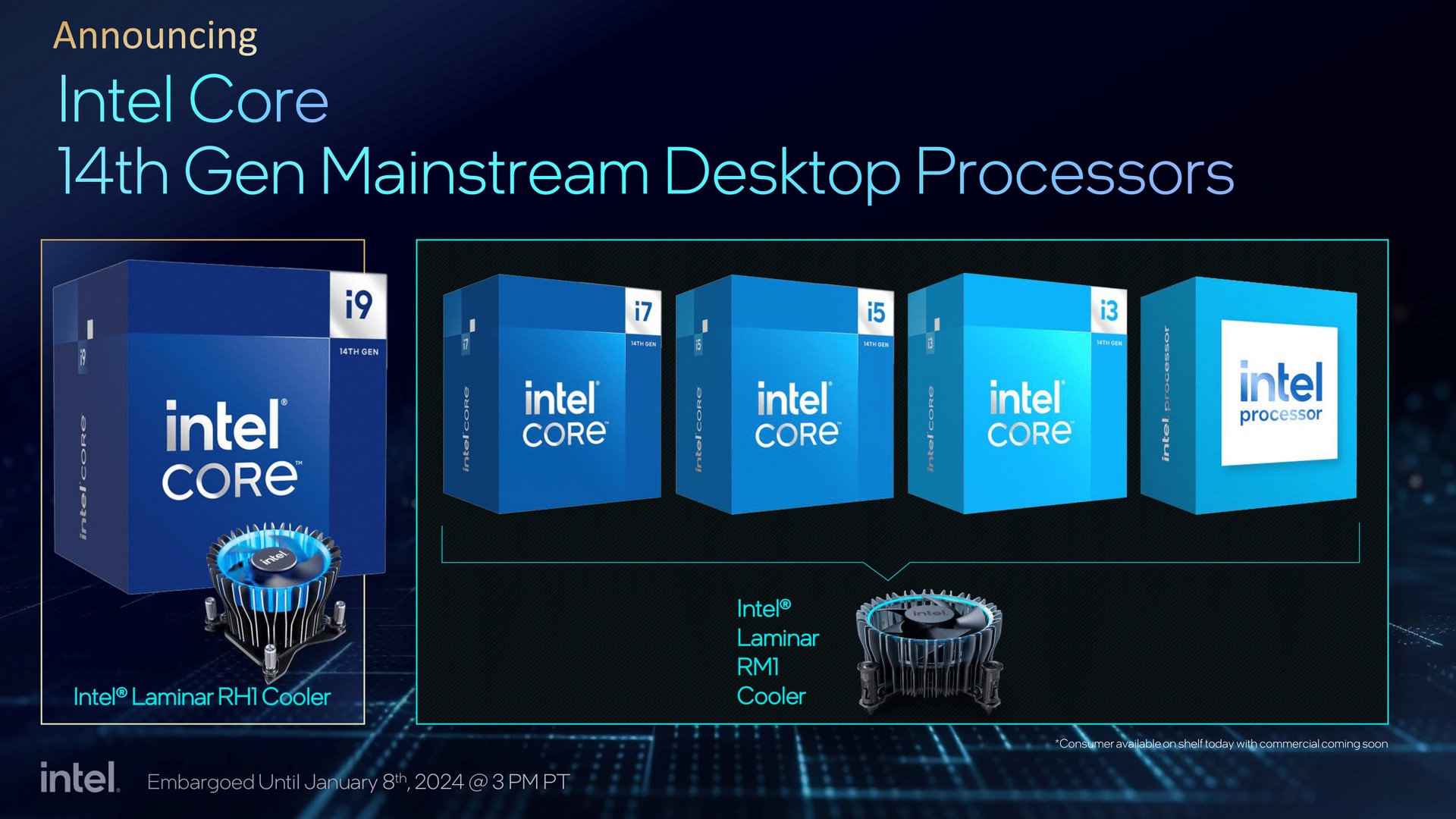
For the 65W series processors, Intel includes a cooler in the package (if you buy the box-type package, not the “tray” version). For most models, including the Core i7-14700/i7-14700F, it’s the Intel Laminar RM1 heatsink (which is already a slightly higher-grade cooler, it’s a cut above the cheapest Laminar RS1 version). With the most expensive Core i9-14900(F) model, you’ll get the more efficient cooler, the Laminar RH1 heatsink (which is the best of the three coolers that Intel introduces for Alder Lake / LGA 1700).
- Tip: More metal, no push-pins; Intel’s upcoming Core i9 coolers
- Tip: Intel Laminar RM1 box cooler test. Why (not) throw it away?
New range of 35W models (with power draw up to 106W)
Simultaneously with the mainstream SKUs without any letter suffix (or with the F suffix), the 14th-generation Core T-series is also coming out, which are processors that have (nominally at least) 35W TDP. Traditionally, these used to be very low-power models that could even be cooled passively with cheap coolers (like the remarkable Arctic Alpine A11-Passive). However, the maximum turbo power has also started to increase for these processors, so nowadays they are quite far from 35W in real life (it should be said that by disabling the turbo boost or “throttling” them by using a weak cooler, they should still be able to run at 35W, but of course you lose performance by doing so).
The T models are available in all categories, from the Intel 300T through the i3-14100T and i5-14400T to the Core i7-14700T (which is again particularly worth noting as it also has 8-12 cores and 28 threads) and the Core i9-14900T with 32 threads. Maximum turbo power ranges from 69W for the quad-core Core i3-14100T and 82W for the Core i5-14400T to 106W for the Core i7-14700T and Core i9-14900T. You can probably think of this turbo power as the actual realistic power draw under-load, which will more or less be reached in many games today as well (which didn’t used to be the case but gaming power consumption has also been creeping up on intel CPUs).
The prices of these models are the same as the standard 65W versions, but they have 200–300 MHz lower boosts and their real performance will probably be significantly weaker, especially in multi-threaded loads, due to the lower (though perhaps somebody would say more sane) power limits.
Core i9-14900KS still in the game
Intel says that with the release of the 35W and 65W models, the “complete lineup of 14th generation desktop processors” is now available in the market. But that doesn’t rule out the special edition, the Core i9-14900KS, which has been speculated to boost to as high as 6.2 GHz. A photo of an alleged sample of this processor has just recently appeared on Twitter, so this model may well still be in the cards. It will come out at a later date though, if Intel is still working on it.
English translation and edit by Jozef Dudáš
⠀





